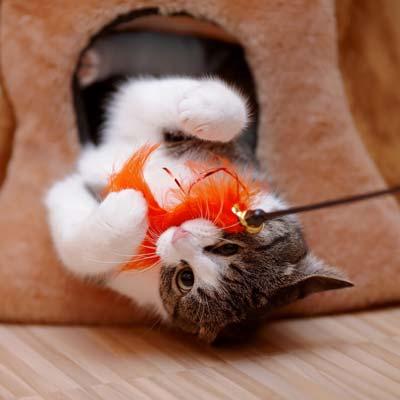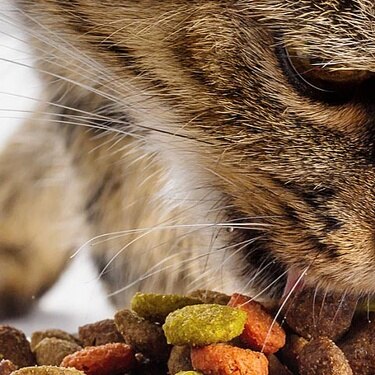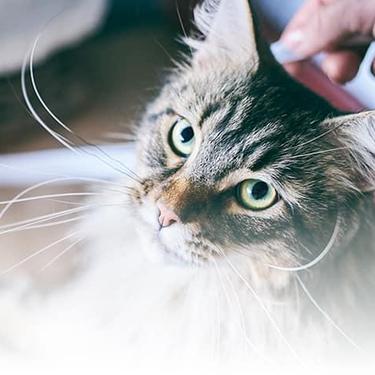
-
Find the right food for your petTake this quiz to see which food may be the best for your furry friend.Find the right food for your petTake this quiz to see which food may be the best for your furry friend.Featured products
 Adult Wet Dog Food with Beef
Adult Wet Dog Food with BeefHill's Science Plan Adult Multipack Wet Dog Food with Chicken, Beef & Turkey are complete premium pet foods for adult dogs from 1 year. Your dog will love these deliciously smooth and savoury minced loaves, formulated for balanced nutrition and overall health.
Shop Now Puppy Food
Puppy FoodHill's Science Plan Puppy Multipack Wet Dog Food with Chicken & Beef are complete premium pet foods for growing puppies from weaning until 1 year old and for pregnant and nursing dogs. Your puppy will love these deliciously smooth and savoury minced loaves, formulated for balanced nutrition and overall health.
Shop Now Mature Adult Dog Food
Mature Adult Dog FoodHill's Science Plan Mature Adult Multipack Wet Dog Food with Chicken & Beef are complete premium pet foods for mature adult dogs from 7 years. Your dog will love these deliciously smooth and savoury minced loaves, formulated to deliver the appropriate amount of energy to support the needs of adult dogs.
Shop NowFeatured products Adult Multipack Wet Cat Food with Beef, Ocean Fish & Chicken
Adult Multipack Wet Cat Food with Beef, Ocean Fish & ChickenTender chunks in gravy for cats, with high-quality protein to maintain lean muscle. With vitamin E and omega-3s & -6s for healthy skin and balanced minerals to support healthy vital organs.
Shop Now Light Adult Multipack Wet Cat Food with Chicken & Ocean Fish
Light Adult Multipack Wet Cat Food with Chicken & Ocean FishTender chicken chunks in gravy for cats, with L-carnitine and fewer calories for ideal weight management. Packed with high-quality protein, omega-6s, and vitamin E for shiny fur and healthy skin.
Shop Now Mature Adult Wet Cat Food with Chicken
Mature Adult Wet Cat Food with Chicken
Tender chicken chunks in gravy for mature adult cats. Made with easy-to-digest ingredients, high-quality protein for lean muscle maintenance and antioxidant vitamins C+E for optimal health.
Shop Now -
Dog
- Dog Tips & Articles
-
Health Category
- Weight
- Food & Environmental Sensitivities
- Urinary
- Digestive
- Joint
- Kidney
-
Life Stage
- Puppy Nutrition
- Adult Nutrition
- Senior Nutrition
Cat- Cat Tips & Articles
-
Health Category
- Weight
- Skin & Food Sensitivities
- Urinary
- Digestive
- Kidney
-
Life Stage
- Kitten Nutrition
- Adult Nutrition
Featured articles Help! My Dog Doesn't Like Me & I Have a Standoffish Cat
Help! My Dog Doesn't Like Me & I Have a Standoffish CatIf you've ever thought to yourself, "My dog doesn't like me," or "Why do I have such a standoffish cat?" rest assured that you aren't the only pet parent who has these concerns.
Read More Show some love with wet foods: a great choice for pets with health issues
Show some love with wet foods: a great choice for pets with health issuesShow some love with wet foods: a great choice for pets with health issues.
Read More The Right Diet For Your Pet
The Right Diet For Your PetIn people, the right diet is very important. If you are eating the wrong way for your metabolism, activity level, age and lifestyle you could end up with health issues.
Read More -


Cats and kids make wonderful companions, but their interactions can be a recipe for disaster if children aren't taught how to play with cats. Cats have sharp claws and are ready to use them if they feel threatened or stressed, and kids, especially young ones, tend to enjoy the sort of loud noises and physical energy that cats find threatening or stressful.
This doesn’t mean your youngest residents are a bad match for each other; with the right encouragement and circumstances, your cat just might become your kid's best playmate.
Empathy and Trust
Interaction and play between cats and kids is an opportunity for learning on both sides. For better or worse, lessons will shine through for both cat and child. Having cats at home can teach kids compassion, empathy, and even self-esteem as they care for one another, according to Mother Nature Network. At the same time, cats learn to trust children and develop a fondness through positive behaviour. On the other hand, improper play can teach a cat to fear and dislike children. If they respond by lashing out, your kids can develop a fear and mistrust of cats (or animals in general) as a result.
To curb this possibility, it's important to help children understand that their cat is not a toy. As adorable as they may be, a cat is a living companion who has just as many feelings as their human housemates. And although cats can become frightened of kids if they are too rough, playing gently on their terms will make them more likely to enjoy their company. It's up to children to show the cat that they can trust them not to cause any harm.
Why Cats Lash Out
It's important to understand the reasons cats sometimes lash out, so a bigger incident can be avoided. Although some cats are grumpy, temperamental, or just plain mischievous, they generally don't bite or use their claws at random. Typically, a cat will throw a swipe because they feel threatened, stressed out, or annoyed at something in their environment. Sometimes, however, a perfectly friendly cat will get over excited during a playful tickle or when following a toy you're moving around and respond with mis-placed aggression.
Rest assured a cat will show warning signs that they’re about to strike. You can often avoid an altercation by teaching children to recognise these signs. According to the Humane Society of the United States, a thrashing tail, flattened ears, arched back, growling, and hissing are all cats' ways of saying "back off, or else."
Teaching kids how to properly handle and play with cats will also go a long way toward avoiding mishaps. Of course, it's also important to use common sense in determining whether kid-cat interaction should be allowed in the first place. If your cat has a grouchy temperament or a history of biting and scratching, or if your children are too young to exercise self-control around delicate animals letting them play together probably isn't a good idea just yet.
But there are ways you can encourage safe and fun play between your cats and kids
Set Up a Safe, Relaxed Environment
 Be sure your cat has a safe place to escape to when they don't like what's happening. Consider a cat tree that's tall enough to put them out of reach of small hands. Cats also love high places because it affords them a full view of their surroundings.
Be sure your cat has a safe place to escape to when they don't like what's happening. Consider a cat tree that's tall enough to put them out of reach of small hands. Cats also love high places because it affords them a full view of their surroundings.


Tasty Tips
Set the 'Ground' Rules
When talking to your kids on how to play with cats, make sure they understand that they need to stay calm and quiet while playing: no yelling, screaming, running, or jumping. Depending on age and maturity level, kids might also need to be told it's not okay to poke or pull fur, whiskers, ears, or your cat’s tail. And if they run and hide, under no circumstances should kids chase them or try to enter their hiding place. Although this may look to children like the cat is playing hide-and-seek, it's actually a signal that your cat has had enough, and their feelings should be respected.
Make Slow Introductions
Have children lay still on the floor and slowly hold out a hand for the cat to sniff. The kitty will be more likely to warm up to them if they’re allowed to approach them on their own. If your cat rubs your child’s outstretched hand with their face or presses their head into it, take it as a sign that they’re ready for some petting.
Supervise Handling, Holding, and Tummy Rubs
Toddlers and pre-school-aged children will likely need to be shown how to stroke kitty's fur without pulling it. You can demonstrate first by stroking their arms to show them how good proper petting feels, then guide their hands as they stroke kitty's back themselves. Keep them away from your cat’s face or underside at first, as they're naturally more sensitive areas. Some cats can get over excited while being petted and bite. With others, petting the tummy is a surefire way to end up with an armful of sharp claws. Even if they roll over to present it, learn whether your cat is stretching or inviting before letting your child touch them.
Older kids may hold your cat, but they should be shown how to pick them up properly: one hand firmly supporting the torso and the other hand supporting the rear-end for stability. Children should either sit or stand still while holding their cat, keeping them upright so they still feel in control. It might be tempting to cradle them like a baby, but very few cats enjoy being held in that position.
Cats love interactive play as much as kids do, but cats tire more quickly and can easily get worked up to aggression. Limit playtime to about ten minutes, or when they get bored and stop, whichever comes first.
Engage with Toys
Toys don't need to be fancy. Ping pong balls, crumpled up paper and empty toilet paper tubes are all equipped to captivate a cat's attention and keep them entertained. Let your child gently throw these makeshift toys to see if your cat chases after them, or place the toy in an empty bathtub where they can bat it around with no one interfering. If they have a favourite toy, chances are they’ll know what it smells like too; indulge them in a game of hide-and-seek by allowing your child to hide the toy and encouraging your cat to look for it.
Playing together can be fun and rewarding for cats and kids alike. The key to making playtime safe are education, supervision, and a respectful attitude toward the cat's feelings. With these bases covered, your cat just might discover they can't get enough of your children's company and vice-versa.
Be sure to check out our other article about interactions between cats and children for more information.


Jean Marie Bauhaus is a pet parent, pet blogger, and novelist from Tulsa, Oklahoma, where she usually writes under the supervision of a lapful of fur babies.
Related products

Tender chicken chunks in gravy for mature adult cats. Made with easy-to-digest ingredients, high-quality protein for lean muscle maintenance and antioxidant vitamins C+E for optimal health.

Tender chicken chunks in gravy for cats, with L-carnitine and fewer calories for ideal weight management. Packed with high-quality protein, omega-6s, and vitamin E for shiny fur and healthy skin.


Tender chunks in gravy for cats, with high-quality protein to maintain lean muscle. With vitamin E and omega-3s & -6s for healthy skin and balanced minerals to support healthy vital organs.
Related articles

There are three common ways to feed a cat. Each way has its advantages and disadvantages.

Chocolate is known to be poisonous for dogs, but it can also be toxic for cats. Learn why chocolate is bad for cats & what to do if she's eaten it.

From essential vitamins & minerals to different types of meat, learn what to look for when choosing the best cat food for your feline.

Learn how to make homemade cat treats that are healthy for your pet with this recipe from Hills Pet Nutrition.

Put your cat on a diet without them knowing
Our low calorie formula helps you control your cat's weight. It's packed with high-quality protein for building lean muscles, and made with purposeful ingredients for a flavourful, nutritious meal. Clinically proven antioxidants, Vitamin C+E, help promote a healthy immune system.
Put your cat on a diet without them knowing
Our low calorie formula helps you control your cat's weight. It's packed with high-quality protein for building lean muscles, and made with purposeful ingredients for a flavourful, nutritious meal. Clinically proven antioxidants, Vitamin C+E, help promote a healthy immune system.

